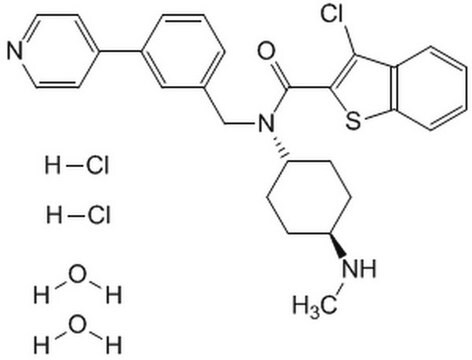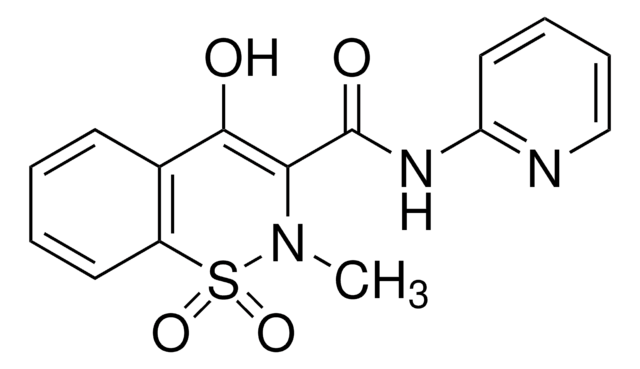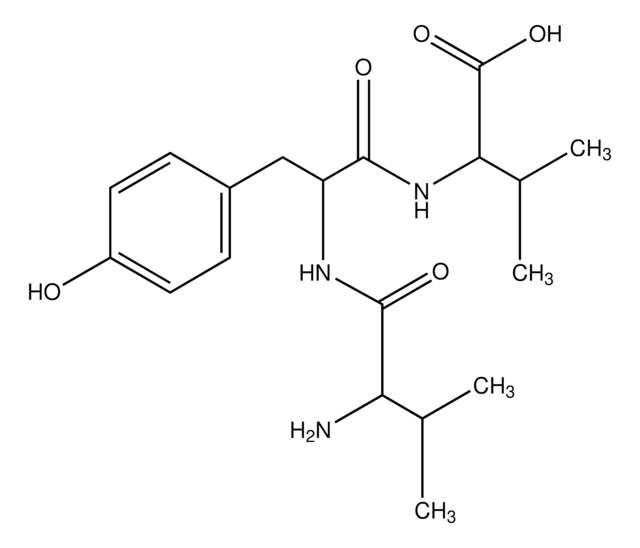All Photos(1)
About This Item
Empirical Formula (Hill Notation):
C66H93N19O25
Molecular Weight:
1552.56
UNSPSC Code:
12352202
NACRES:
NA.32
Recommended Products
biological source
human
Assay
≥95% (HPLC)
form
lyophilized
composition
Peptide Content, ≥75%
storage condition
protect from light
storage temp.
−20°C
Amino Acid Sequence
Glp-Gly-Val-Asn-Asp-Asn-Glu-Glu-Gly-Phe-Phe-Ser-Ala-Arg
Application
Pyroglutamated Fibrinopeptide B (Glp-Gly-Val-Asn-Asp-Asn-Glu-Glu-Gly-Phe-Phe-Ser-Ala-Arg) is related to Fibrinopeptide B (Gln-Gly-Val-Asn-Asp-Asn-Glu-Glu-Gly-Phe-Phe-Ser-Ala-Arg) derived from fibrinogen (desAA-fibrin) by thrombin activity.
Storage Class Code
11 - Combustible Solids
WGK
WGK 3
Flash Point(F)
Not applicable
Flash Point(C)
Not applicable
Choose from one of the most recent versions:
Certificates of Analysis (COA)
Lot/Batch Number
Don't see the Right Version?
If you require a particular version, you can look up a specific certificate by the Lot or Batch number.
Already Own This Product?
Find documentation for the products that you have recently purchased in the Document Library.
W Ruf et al.
Biochimica et biophysica acta, 965(2-3), 169-175 (1988-05-12)
Thrombin preferentially cleaves fibrinopeptides A (FPA) from fibrinogen resulting in the formation of desAA-fibrin from which most of the fibrinopeptides B (FPB) are then released with an enhanced rate. Kinetics of fibrinopeptide release from normal and dysfunctional fibrinogens were investigated
Yutaka Masuda et al.
Peptides, 23(3), 409-411 (2002-02-12)
We detected a peptide having a behavioral activity on mouse forced swimming from sera of healthy volunteers without affective and psychotic diseases. The amino acid sequence was GVNDNEEGF, which was found in the sequence of human beta-fibrinogen. The synthesized peptide
Tomas Riedel et al.
Blood, 117(5), 1700-1706 (2010-11-26)
Fibrinogen adsorption on a surface results in the modification of its functional characteristics. Our previous studies revealed that fibrinogen adsorbs onto surfaces essentially in 2 different orientations depending on its concentration in the solution: "side-on" at low concentrations and "end-on"
Our team of scientists has experience in all areas of research including Life Science, Material Science, Chemical Synthesis, Chromatography, Analytical and many others.
Contact Technical Service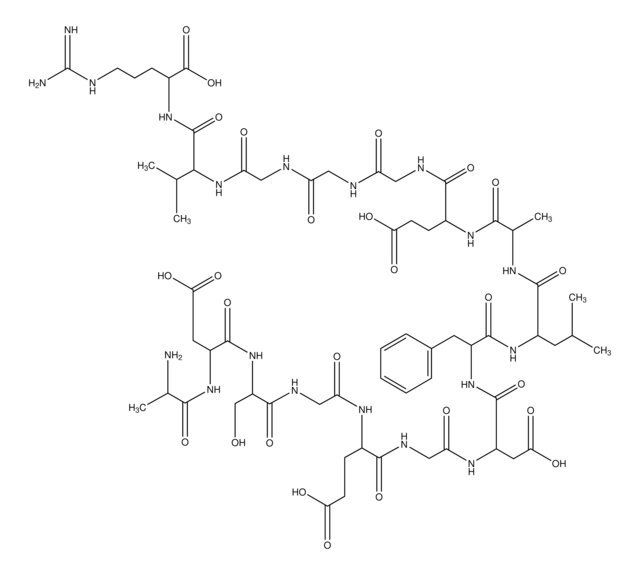
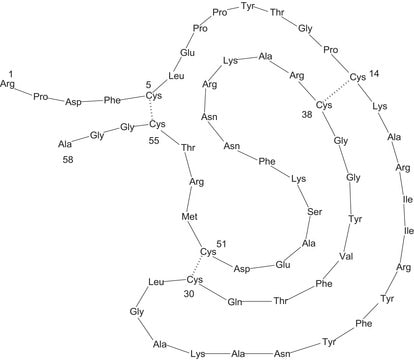
![[Glu1]-Fibrinopeptide B human ≥90% (HPLC)](/deepweb/assets/sigmaaldrich/product/structures/122/537/7ead5c32-cb67-4325-9ce7-66c8dec24bdd/640/7ead5c32-cb67-4325-9ce7-66c8dec24bdd.png)
![[Tyr0]-Fibrinopeptide A human](/deepweb/assets/sigmaaldrich/product/images/150/102/03b083b5-a149-4f15-be65-e8832cce7318/640/03b083b5-a149-4f15-be65-e8832cce7318.jpg)

